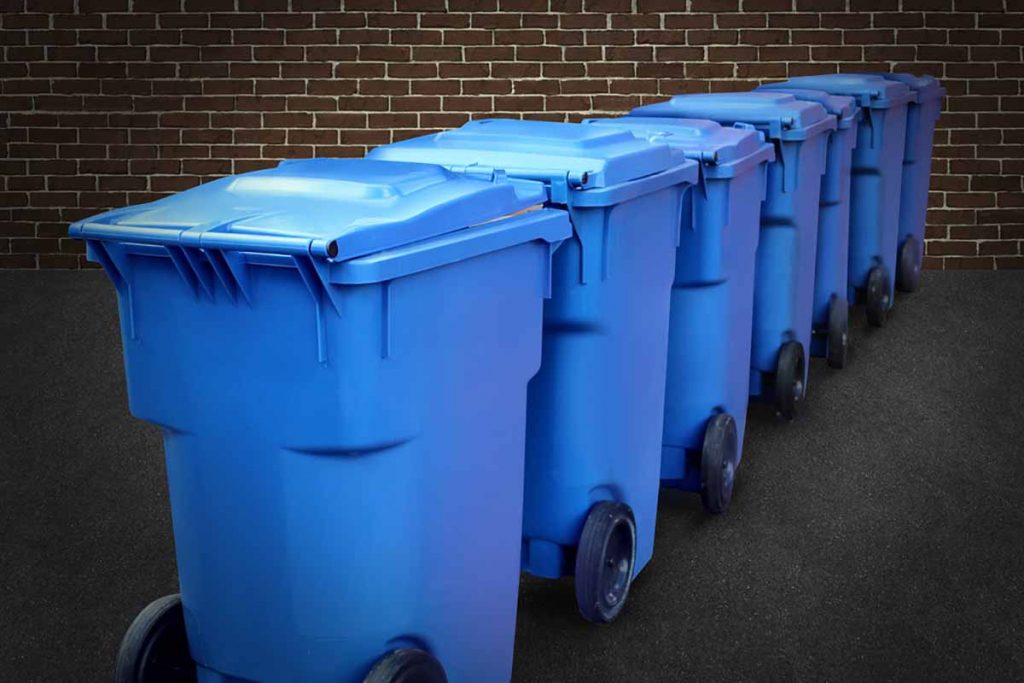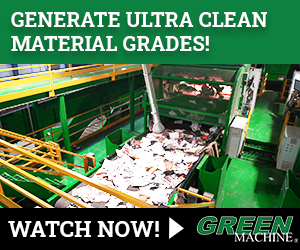
For the second year in a row, Recycle BC observed “significant growth” in collected metric tons, with a 17% increase over the past two years. | Lightspring/Shutterstock
British Columbia’s paper and plastic packaging collection rates have rebounded after pandemic-related challenges, reaching a record-high recovery rate of just over 94%.
According to Recycle BC’s 2021 report, over 214,000 net tons were collected as part of the packaging and paper product program, an increase of over 5% from 2020. This amounts to a recovery rate of 94.1%, up from 85.8% in 2020.
It should be noted that a recovery rate differs from the typical recycling rate statistic used in many jurisdictions to assess materials recovery.
A recovery rate is determined by using the total weight of a material type recovered as the numerator and the total amount of that same material type sold into the market as the denominator. A recycling rate, on the other hand, typically uses the total weight of all materials recovered as a numerator and total weight of the full waste stream as the denominator.
Recycle BC is a nonprofit organization providing residential recycling services for packaging and paper for residents of British Columbia. It is financed and operated by businesses that supply packaging and paper.
Some materials exceed 100%
Broken down by material, paper had a 101% recovery rate in 2021, indicating that some portion of the paper recovered in British Columbia was originally sold into a market outside the province. Metal was recovered at a rate of 83% and glass at 116%. Plastic had an overall recovery rate of 55%, with 67% of rigid plastic recovered and 28% of flexible plastic.
“Effects of the COVID-19 pandemic were still being realized in 2021 as residents placed a greater volume of material in recycling bins, bags and depots resulting in an increase in the [metric tons] of material collected and an increase in the recovery rate from the previous year,” the report noted.
In 2020, recovery rates were 90% for paper, 85% for metal and 97% for glass. For plastics overall, the rate was 52%, while rigid plastics and flexible plastics were recovered at rates of 64% and 24%, respectively.
For the second year in a row, Recycle BC also observed “significant growth” in collected metric tons, with a 17% increase over the past two years, or 30,000 metric tons more. The report suggested that the increase was due to people working from home, dining out less and doing more online shopping. It also noted that reporting timing for the year due to the pandemic could also play a role.
“More than one-third of this increase came in 2021,” the report stated. “It is noteworthy that amid the pandemic we have responsibly managed such a significant increase in materials.”
Overall, the program recycled 197,745 metric tons of collected material, disposed of 18,288 metric tons and managed 11,821 metric tons as engineered fuel in 2021. That’s an 86.0% recycling rate for collected material.
Recycle BC also expanded accessibility in 2021, with over 2.03 million households in 183 communities having access to recycling services, which is 99.3%. However, program costs decreased 19%, “almost entirely driven by the upward trajectory of commodity prices in 2021,” the report noted.
More domestic markets
In 2021, Recycle BC shipped more material to local North American end markets than ever before, and “predominantly in the Pacific Northwest,” the report stated, including the majority of plastic, glass and metal, and over half of paper materials.
In 2014, 33% of the total weight collected was handled by domestic markets and 67% was exported. In 2019, the split was more even, with 48% handled domestically and 52% exported. The domestic percentage increased to 65% in 2020 and reached 72% in 2021.
“Recycle BC continues to pursue local North American end markets first and foremost and therefore strives to be a preferred supplier to these end markets,” the report noted. “In 2021, Recycle BC sent the most material to local North American end markets in the program’s history, reducing reliance on overseas end markets, advancing the local circular economy and reducing the GHG emissions from marine shipments.”
More than 97% of plastics collected in B.C. were sold to a local end market in Vancouver, Canada, and most was processed into pellets for new packaging and products, the report noted, except for “a small quantity of material where there was no recycling solution, like flexible plastic packaging,” which was used as fuel.
Paper was processed into boxes and other paper products, metal containers were recycled into new packaging and sheet metal, and glass was either processed at a U.S. glass plant for new bottles or processed into sandblast grit or construction aggregate in B.C., the report stated.
The nonprofit also started three collection pilot projects: five pop-up depot collection events, a curbside pilot collection of soft plastics and foam packaging from homes and eight soft plastics community collection events.
More stories about EPR/stewardship
- CAA, Recology open first drop-off hard-to-recycle site
- Coated paper group plans for EPR rollouts
- Oregon offers first test as EPR rules take shape



